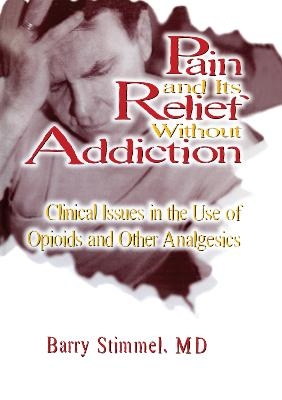
Pain and Its Relief Without Addiction
Routledge (Verlag)
978-1-56024-906-1 (ISBN)
management of acute and chronic pain
pain in children
pain and cancer
pain and AIDS
psychological support of persons in pain
theories of pain perception
the anatomy of painIn Pain and Its Relief Without Addiction, you’ll learn the basic concepts of drug dependence, tolerance, and withdrawal, the pharmacological actions and side effects of drugs used to provide analgesia, and the fundamental steps to be taken in proper pharmacological treatment of pain. The book produces more effective and more informed communication among physicians, other health professionals, and patients so that together they can achieve better pain relief. As Pain and Its Relief Without Addiction illustrates, it is crucial that both patients and physicians understand clearly the terms describing drug use and the behavioral, biochemical, and cellular concepts underlying dependence, tolerance, and withdrawal. Finally, you will acquire a knowledge of all the potential causes of pain and the appropriate steps for intervention.Medical students, new practitioners, and those wishing to reconsider their approaches to pain management will benefit from the book’s coverage of general principles for pain control, the use of drug combinations to provide the most effective relief, methods for treating pain in different populations (such as the elderly and persons with chronic medical conditions), and alternative options for failed treatment. The scope of Pain and Its Relief Without Addiction reaches from nonprescription medications, such as aspirin, to NSAIDS, like ibuprofen, to narcotic analgesics to stimulants such as amphetamines and caffeine. It is the most comprehensive book available on various drugs, their desired effects and side effects, and their use to alleviate pain.
Stimmel, Barry
Contents
I. Physiological Concepts of Pain and Dependence
The Anatomy of Pain
Neuroregulators and Pain
Basic Concepts of Dependence, Tolerance, and Withdrawal
The Effects of Emotion on Pain
II. Drugs Used to Relieve Pain
Nonnarcotic Analgesics and Nonsteroidal Anti-inflammatory Drugs
Narcotic (Opioid) Analgesics I: Narcotic Agonists
Narcotic Analgesics II: The Narcotic (Opioid) Agonists-Antagonists
The Stimulants
Barbiturates, Nonbarbiturate Hypnotics, and Minor Tranquilizers
The Major Tranquilizers
The Antidepressants
Marijuana
III. The Practical Management of Pain
General Principles of Pain Management
Management of Acute and Chronic Pain
Unrelieved Pain: The Role of the Physician
IV. Management of Pain in Special Populations
Pain Relief in Children and the Elderly
Relieving Pain in Malignant Disorders: The Acquired Immunodeficiency Syndrome and Persons With Cancer
Management of Pain in Special Populations: Persons Tolerant to or Dependent on Opioids
Index
Reference Notes Included
| Erscheint lt. Verlag | 23.4.1997 |
|---|---|
| Verlagsort | New York |
| Sprache | englisch |
| Maße | 156 x 216 mm |
| Gewicht | 960 g |
| Themenwelt | Medizin / Pharmazie ► Medizinische Fachgebiete ► Neurologie |
| Medizin / Pharmazie ► Medizinische Fachgebiete ► Pharmakologie / Pharmakotherapie | |
| Medizin / Pharmazie ► Medizinische Fachgebiete ► Schmerztherapie | |
| ISBN-10 | 1-56024-906-4 / 1560249064 |
| ISBN-13 | 978-1-56024-906-1 / 9781560249061 |
| Zustand | Neuware |
| Haben Sie eine Frage zum Produkt? |
aus dem Bereich


